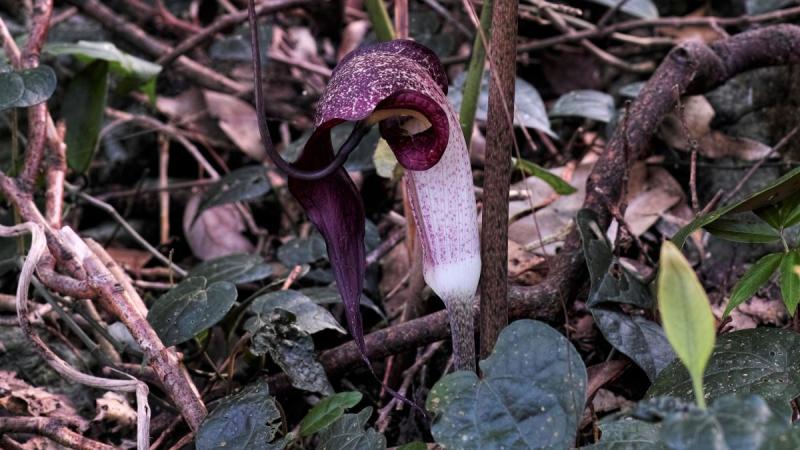A gnat has found a creative way to escape this deadly flower


Scientists uncovering a gnat that has managed to turn a death trap into a nursery for it's young
- a plant-insect relationship that defies definition.

Parasites and symbiots.

Arisaema thunbergii. YAMASHITA Hiroaki
Scientists have discovered a plant-insect relationship right on the cusp of mutualism and parasitism, uncovering a gnat that has managed to turn a death trap into a nursery for it's young.
The lucky escape starts with a pitcher plant look-a-like named Arisaema thunbergia . The jack-in-a-pitcher plant produces a "subtle, musty scent detectable by humans", which attract gnats trying to find fungi to feed on and lay their eggs. A cavity system inside the plant allows insects to enter the trap, but not easily leave again.
The male plants have a small hole for escaping after the gnats have been thoroughly covered in pollen, but the female plants have no escape option, and it was thought that the gnats just slowly died.
But the researchers started investigating, by collecting 62 plants - 39 male and 23 female - and then examining what was inside.
They found that the main pollinator, a fungus gnat species called Leia ishitanii laid it's eggs inside the flower traps, and the larvae feed on the flower as it decays. They emerge from the plant after a few weeks, seemingly unscathed.

In some cases, the team even found some baby gnats that emerge without the corpse of the mother, suggesting that the females can also sometimes escape.
"These findings challenge the conventional understanding that deceptive pollination is the norm within the genus Arisaema ," the researchers write in their new paper, published in Plants, People and Planet .
"The interaction … suggests an intermediate stage between brood-site deception and nursery pollination mutualism."
"It is famous as the only plant that achieves pollination at the expense of the pollinator's life," says Kobe University professor of biology Kenji Suetsugu.
The researchers are still trying to categorise the type of relationship. It's not mutualism, because some still get trapped in the flower, and it's not parasitism because there is some benefits to the relationship.
![]() Leia ishitanii Arisaema thunbergii
Leia ishitanii Arisaema thunbergii
"We suggest that the interaction likely represents an intermediate stage in the evolution of nursery pollination mutualism," says Suetsugu.
"This finding adds a new dimension to our knowledge of plant-insect interactions, but the most exciting aspect is that even in well-studied fields, there is still much to learn.
"Nature is full of surprises!"
Jacinta Bowler is a science journalist at Cosmos. They were published in the Best Australian Science Writing 2023.




Relations in the "natural world" are a lot stranger than anything humans could invent.